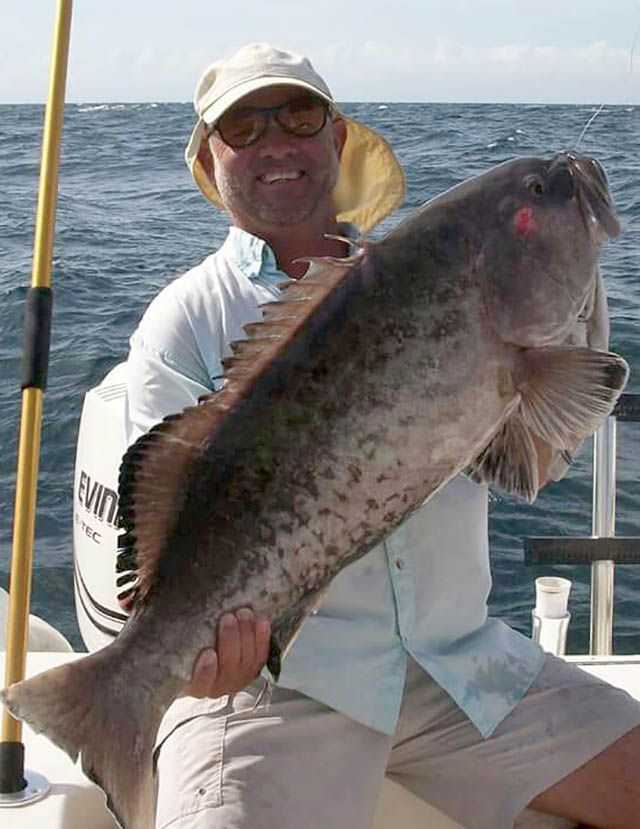
[dropcap]M[/dropcap]ay presents anglers with a lot of fish catching opportunities. The spring mahi run is in full swing, kingfish will be starting to show in good numbers, the snapper bite will still be on and the big thing will be that grouper season is now open.
Grouper are a highly sought after game fish that can be found around any structure in our Treasure Coast waters. Offshore they can be found at ten-foot depths on the reefs that run the beach out to the deep water canyons in the 1,000 feet depths.
For a day of fun grouper fishing, there are many natural and artificial reefs out to 150 feet of water that hold these fish. You can find structures on charts from your local tackle shops and also by watching your bottom machine while running to find new areas of structure.
Grouper are a magnificent fighting fish and they know where their home is and they don’t like to leave. Grouper will eat a variety of different baits, both live and artificial will work well. For live bait fishing, a big greenie will work well but a bigger blue runner that is lively will work even better. A big blue runner is livelier and won’t as easily be eaten by the smaller fish versus a greenie. Drop the blue runner (or greenie) down to the bottom near the edge of the structure with enough weight to hold bottom. The livelier your live bait, the better, as the commotion will entice the grouper to come out and hopefully make it a meal. Artificial lures work just as well. A butterfly jig bounced off the bottom is a good way to entice a grouper to eat. Bouncing the butterfly jig off of the bottom makes noise and pushes puffs of sand causing a reaction strike from the grouper when it comes to check things out.
When fishing for grouper, you will want to have some heavier gear for the fight. A good set-up is a 6- to 7-foot rod matched with 6/0 reel or 8,000 size spinning reel with a lot of drag tightened down, with 50- to 80-pound braid for the sensitivity and it doesn’t stretch like mono. This will keep the grouper from getting back to its hole after eating and getting hooked up. The short rod will give you more leverage and if you use short pumps it will tire the fish out quicker. If you do get “rocked” up, leave the rod alone for a few minutes, sometimes the grouper will come out of its hole and then you can try to reel it up.
There are many species of grouper, so know which ones you can keep and the size limits. These are one of the best fish for a fight and also very tasty on the table! While fishing for grouper, don’t forget to keep a pitch rod ready, since you might get a visit from a cobia or a mahi.
Get out on the water and enjoy the springtime bite and be safe.
[easy-social-share]




